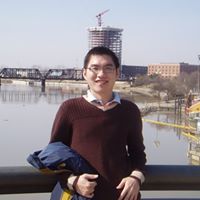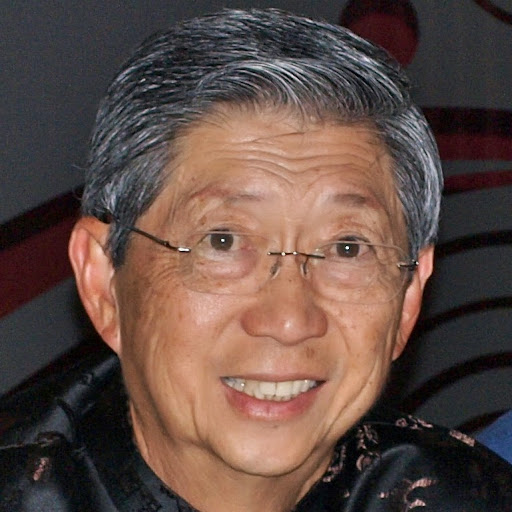Henry H Pang
age ~65
from San Francisco, CA
- Also known as:
-
- Henry Honkuen Pang
- Henry K Pang
- Henry Hon Kuen
- Henry Honkuen N
- Phone and address:
-
335 Wheeler Ave, San Francisco, CA 94134
(415)4682281
Henry Pang Phones & Addresses
- 335 Wheeler Ave, San Francisco, CA 94134 • (415)4682281
- Daly City, CA
- Artesia, CA
- San Mateo, CA
Specialities
Buyer's Agent • Listing Agent
Us Patents
-
Alignment Simulation
view source -
US Patent:6988060, Jan 17, 2006
-
Filed:Aug 1, 2000
-
Appl. No.:09/629953
-
Inventors:Paul Derek Coon - Redwood City CA, US
Henry Kwok Pang Chau - San Francisco CA, US
Arun Ananth Aiyer - Fremont CA, US -
Assignee:Nikon Corporation - Tokyo
-
International Classification:G05F 17/50
-
US Classification:703 13, 355 53, 355 67, 356400, 356401
-
Abstract:An alignment simulation method simulates the signal waveform for an alignment mark using various alignment methods as well as the signal strength for an alignment mark, which is useful in optimizing the thickness of one or more layers as well as the geometry of the mark. The simulation of signal strength is also useful in optimizing the thickness of a layer for artifact wafers. The alignment simulation method includes accurately modeling the alignment mark, including one or more layers of various thicknesses and materials. The accurate modeling of the alignment mark includes such things as smoothing regions of the alignment mark and generating lateral shifts of the layers. The model of the alignment mark is a series of small pixels, each including the thickness of the layers and the layers indices of refraction. Using scalar diffraction, a complex reflectivity is generated for each pixel and a fast fourier transform is performed on the series of pixels. The results of the fast fourier transform are used to simulate the diffraction intensities for the alignment mark alignment systems, such as LIA or LSA as well as the signal waveforms.
-
Measurement System That Includes An Encoder And An Interferometer
view source -
US Patent:20130182235, Jul 18, 2013
-
Filed:Jan 10, 2013
-
Appl. No.:13/738666
-
Inventors:Nikon Coporation - Tokyo, JP
Akira Okutomi - Saitama, JP
Bausan Yuan - San Jose CA, US
Henry Kwok Pang Chau - Cupertino CA, US -
Assignee:NIKON CORPORATION - Tokyo
-
International Classification:G03F 7/20
-
US Classification:355 72, 355 77
-
Abstract:A stage assembly () for positioning a device () along a first axis includes (i) a stage () that retains the device (); (ii) a mover assembly () that moves the stage () along the first axis; (iii) an interferometer (), (iv) an encoder (), and (v) a control system (). The interferometer () monitors the movement of the stage () along the first axis, the interferometer () generating an interferometer signal that relates to the movement of the stage () along the first axis. The encoder () monitors the movement of the stage () along the first axis, the encoder () generating an encoder signal that relates to the movement of the stage () along the first axis. The control system () utilizes both the encoder signal and the interferometer signal to control the mover assembly ().
-
Low Noise Optically Pumped Laser Structures Utilizing Dispersion Elements
view source -
US Patent:20130188663, Jul 25, 2013
-
Filed:Sep 25, 2012
-
Appl. No.:13/626747
-
Inventors:Henry Yang Pang - San Jose CA, US
-
International Classification:H01S 3/091
H01S 3/094 -
US Classification:372 70
-
Abstract:A refractive optics-based dispersion control structure for a low-noise solid state laser standing-wave resonator has at least one dispersive element, a gain medium, and a frequency doubling element disposed in the resonant beam path. The dispersive element provides geometric-based laser bandwidth control that minimizes the laser output power noise. The dispersive element in certain embodiments may be a prism. The dispersive element in certain other embodiments may be integrally formed with the gain medium. Numerous different architectures using these elements are disclosed.
-
Command Trajectory For Driving A Stage With Minimal Vibration
view source -
US Patent:63203456, Nov 20, 2001
-
Filed:Mar 5, 1998
-
Appl. No.:9/036401
-
Inventors:Bausan Yuan - San Jose CA
Kazuaki Saiki - Tokyo, JP
Henry Kwok Pang Chau - San Francisco CA -
Assignee:Nikon Corporation - Tokyo
-
International Classification:H02P 704
-
US Classification:318569
-
Abstract:A command trajectory drives a stage to produce a smooth motion while minimizing any vibrations or oscillations of the structure. The command trajectory provides an acceleration and a deceleration that have derivatives, known as the jerk, equal to zero at the beginning and end of the acceleration and deceleration periods. Because the jerk is equal to zero at the beginning and end of acceleration and deceleration, the influence of the reactive forces on the positioning system's structure is reduced, thereby minimizing oscillation of the structure. Moreover, the jerk is continuous throughout the acceleration and deceleration periods, resulting in a smooth continuous motion of the stage. The jerk on the stage during acceleration and deceleration has an adjustable duration to reduce the structural disturbances and decrease settling time.
-
Determination Of Customized Components For Fitting Wafer Profile
view source -
US Patent:20200292304, Sep 17, 2020
-
Filed:May 29, 2020
-
Appl. No.:16/888235
-
Inventors:- Tokyo, JP
Henry Pang - Foster City CA, US
Fardad A. Hashemi - Moraga CA, US -
International Classification:G01B 11/24
G03F 7/20 -
Abstract:Method and system for defining basis functions for fitting distortions of profiles of objects in a batch, that has undergone a fabrication process, in a manner adaptable to the fabrication process to reduce the errors between profiles approximated with the use of such basis functions and actual object profiles. Process-specific individual basis functions are defined based on spatially-dense measurement of objects from training sub-set of the batch and applying learning algorithm to results of such measurement. Advantages of process-adaptable basis functions over generic basis functions for fitting distortion shapes of objects include higher accuracy of fitting either at larger or a fewer locations across the object.
-
Techniques For Limiting Power Via Secondary Control Of A Voltage Regulator
view source -
US Patent:20170102760, Apr 13, 2017
-
Filed:Oct 8, 2015
-
Appl. No.:14/879040
-
Inventors:- Santa Clara CA, US
Jonah ALBEN - San Jose CA, US
Andrew R. BELL - San Francisco CA, US
Ming CHEN - Palo Alto CA, US
Gabriele Gorla - Santa Clara CA, US
Qi LIN - San Jose CA, US
Henry PANG - San Jose CA, US -
International Classification:G06F 1/32
-
Abstract:A power subsystem is configured to manage the maximum power usage of a computer subsystem. A power detector determines when power usage approaches the maximum capability of the power supply. The power detector generates a signal that corresponds to power usage. A controller then applies the signal to the system voltage regulator as a secondary regulation function such that the output voltage is reduced in a manner that supports maximum operating voltage while limiting power usage to within the capability of the power supply. The controller may configure the signal to implement the secondary regulation function as a modification of the feedback voltage, the reference voltage, or the current feedback of the regulator. As a result the subsystem causes the computer subsystem to operate at an optimum point on the voltage-current curve of the power supply.
-
Determination Of Customized Components For Fitting Wafer Profile
view source -
US Patent:20160305772, Oct 20, 2016
-
Filed:Apr 14, 2016
-
Appl. No.:15/099346
-
Inventors:- Tokyo, JP
Henry Pang - Foster City CA, US
Fardad A. Hashemi - Moraga CA, US -
International Classification:G01B 11/24
G03F 7/20 -
Abstract:Method and system for defining basis functions for fitting distortions of profiles of objects in a batch, that has undergone a fabrication process, in a manner adaptable to the fabrication process to reduce the errors between profiles approximated with the use of such basis functions and actual object profiles. Process-specific individual basis functions are defined based on spatially-dense measurement of objects from training sub-set of the batch and applying learning algorithm to results of such measurement. Advantages of process-adaptable basis functions over generic basis functions for fitting distortion shapes of objects include higher accuracy of fitting either at larger or a fewer locations across the object.
Name / Title
Company / Classification
Phones & Addresses
Teacher
Torrance Unified School District
Elementary/Secondary School
Elementary/Secondary School
2335 Plz Del Amo, Torrance, CA 90501
(310)9726500
(310)9726500
Vice-President
LIGHTHOUSE PHOTONICS INCORPORATED
Management Consulting Services
Management Consulting Services
Linda G Coleman, Sunnyvale, CA 94089
2000 Wyatt Dr, Santa Clara, CA 95054
528 E Weddell Dr, Sunnyvale, CA 94089
520 E Weddell Dr, Sunnyvale, CA 94089
2000 Wyatt Dr, Santa Clara, CA 95054
528 E Weddell Dr, Sunnyvale, CA 94089
520 E Weddell Dr, Sunnyvale, CA 94089
Resumes

Senior Systems Engineer
view sourceLocation:
San Francisco, CA
Industry:
Research
Work:
Johnson & Johnson
Senior Systems Engineer
Nikon Research Corporation of America Jun 2012 - Nov 2017
Senior Mechanical Engineer
Throwmotion, Inc. Jul 2011 - Aug 2011
Electronics Engineer
Co-Op Internships Jan 2007 - Dec 2008
Student Intern
Senior Systems Engineer
Nikon Research Corporation of America Jun 2012 - Nov 2017
Senior Mechanical Engineer
Throwmotion, Inc. Jul 2011 - Aug 2011
Electronics Engineer
Co-Op Internships Jan 2007 - Dec 2008
Student Intern
Education:
Stanford University 2010 - 2012
Master of Science, Masters, Mechanical Engineering University of Waterloo 2005 - 2010
Master of Science, Masters, Mechanical Engineering University of Waterloo 2005 - 2010
Skills:
Sensors
Matlab
Mechatronics
Automation
Mechanical Engineering
Catia
Statistical Data Analysis
Machine Learning
Labview
Matlab
Mechatronics
Automation
Mechanical Engineering
Catia
Statistical Data Analysis
Machine Learning
Labview
Interests:
Team Oriented Activities
Sketching
Reading
Sketching
Reading
Languages:
Cantonese
Mandarin
English
Japanese
Mandarin
English
Japanese

Private Client Advisor
view sourceLocation:
San Francisco, CA
Industry:
Financial Services
Work:
Charles Schwab 1997 - 2011
Branch Manager Vice President
Jpmorgan Chase & Co. 1997 - 2011
Private Client Advisor
Branch Manager Vice President
Jpmorgan Chase & Co. 1997 - 2011
Private Client Advisor
Skills:
Wealth Management
Mutual Funds
Investments
Portfolio Management
Asset Management
Mutual Funds
Investments
Portfolio Management
Asset Management

Henry Pang
view source
Henry Pang
view source
Henry Pang
view sourceYoutube

Huadg Henry Pang
view sourceHuadong Henry Pang

Henry Pang
view source
Henry Nicholas Pang
view source
Henry Pang
view source
Henry Pang Gbp
view source
Henry Pang
view source
Henry Pang
view source
Henry Pang
view sourceClassmates

Henry Pang
view sourceSchools:
Sha Tin College Hong Kong IL 1987-1989

Henry Pang, St. Louis Hig...
view source
Sha Tin College, Hong kong
view sourceGraduates:
Henry Pang (1987-1989),
Stephanie Osborn (1998-2004),
Bertrand Law (1991-1997),
Shauna McDermott (1983-1989)
Stephanie Osborn (1998-2004),
Bertrand Law (1991-1997),
Shauna McDermott (1983-1989)
Plaxo

Pang Henry
view sourceCreative Division

Henry Pang
view sourceBio-Imaging Engineer at Aureon Laboratories, Inc.
Googleplus

Henry Pang
Education:
University of Arizona - Electrical and Computer Engineering, University of Arizona - Optical Engineering
Tagline:
Old West Cowboy
Bragging Rights:
Can build laser to shoot down UFO!

Henry Pang

Henry Pang

Henry Pang

Henry Pang

Henry Pang

Henry Pang

Henry Pang
Myspace
Get Report for Henry H Pang from San Francisco, CA, age ~65







